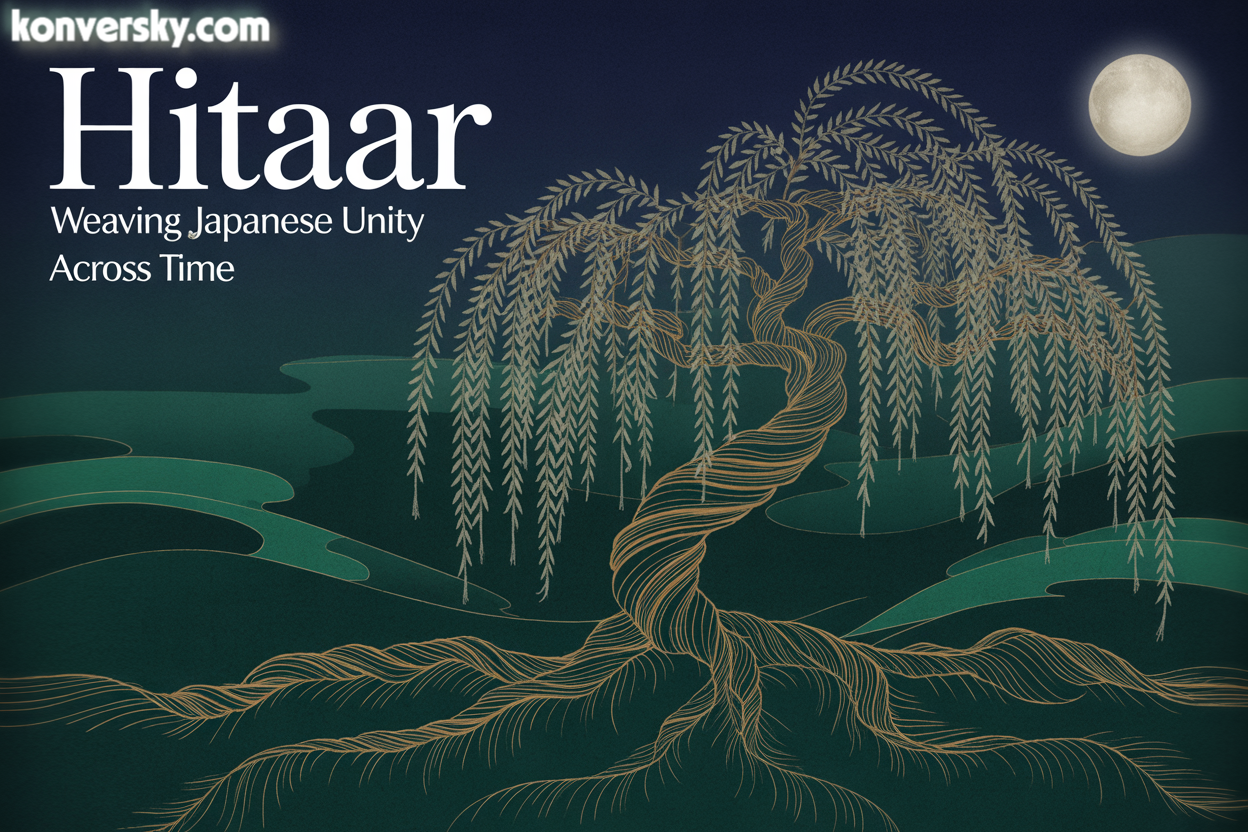Introduction: The Enduring Spirit of Hitaar
Hitaar stands as a beautiful reflection of Japan’s deep respect for harmony and unity. Rooted in centuries of tradition, it symbolizes togetherness that transcends time and generations. This ancient practice reminds people that true strength lies in community and shared purpose.
Over the years, Hitaar has continued to evolve while keeping its essence alive. Each ceremony or performance inspired by it celebrates the bond between individuals and their surroundings. Through graceful expressions and collective participation, it nurtures a sense of belonging among those who take part.
From sacred rituals of the past to modern interpretations seen today, Hitaar remains a living symbol of connection. It bridges generations, inspiring mutual respect and understanding. This article explores how its enduring spirit continues to shape Japan’s cultural identity through unity and harmony.
Origins of Hitaar: Tracing the Threads of Tradition
The story of Hitaar begins in ancient Japan, where traditions and rituals shaped daily life. It was first practiced in small villages, where people gathered to celebrate unity and peace. These early gatherings often took place during seasonal festivals and community ceremonies. Every movement, chant, or offering carried deep symbolic meaning, expressing gratitude to nature and the spirits.
Over time, Hitaar grew beyond its ceremonial roots and became part of Japan’s cultural fabric. It reflected the values of cooperation, respect, and balance that defined early Japanese society. Each performance served as a reminder of shared purpose and the harmony between people and their surroundings.
As generations passed, Hitaar evolved yet never lost its essence. It stood as a bridge connecting old traditions with new expressions of togetherness. Even today, its influence remains strong, reminding Japan of the importance of unity in preserving identity and cultural pride.
The Philosophy of Unity in Hitaar
At the heart of Hitaar lies the timeless Japanese concept of war, meaning harmony and balance. This principle guides every gesture, rhythm, and expression within the tradition. Through it, people are reminded that strength grows from connection rather than separation. Every act within Hitaar celebrates unity, linking individuals through shared purpose and emotion.
Unlike practices that highlight personal achievement, Hitaar values collective effort above individuality. Participants move together, creating a rhythm that mirrors the flow of life. This togetherness reflects the belief that peace can only flourish when hearts and minds align. Each moment becomes a living expression of respect, patience, and cooperation.
The philosophy of war extends far beyond ceremonies or performances. It influences how people interact, create art, and approach daily life in Japan. From family gatherings to professional spaces, the essence of Hitaar encourages kindness, balance, and mutual understanding. Through unity, it continues to shape both cultural identity and human connection.
Traditional Practices and Ceremonies
Hitaar finds its deepest meaning in the traditional gatherings that bring people together in celebration. These events are often held during festivals, harvests, or family milestones, symbolizing unity and gratitude. Participants join hands in dance, song, and art, creating moments that strengthen community bonds. Every movement reflects shared emotion, turning the occasion into a living expression of harmony.
In many ceremonies, colored fabrics, lanterns, and rice patterns are used to represent connection. Each hue carries meaning—red for vitality, white for purity, and gold for prosperity. These symbolic elements remind everyone of life’s balance and the beauty of collective strength.
Music and rhythm also hold a sacred role in Hitaar rituals. Traditional drums and string instruments guide the pace of each performance, echoing the heartbeat of the community. As melodies rise and fall, participants move in unison, expressing gratitude to nature and one another. Through these timeless ceremonies, Hitaar continues to preserve Japan’s enduring spirit of unity and respect.
Modern Adaptations: Hitaar in Today’s Japan
In today’s Japan, Hitaar continues to thrive by blending ancient values with modern creativity. It is no longer limited to traditional villages or ceremonies but has found new life in urban communities, schools, and cultural festivals. These modern gatherings celebrate unity in diverse ways, from group performances to public art displays. The essence of togetherness remains, even as the setting and style evolve.
Younger generations are giving Hitaar a refreshing voice through modern art, digital media, and music. They use film, dance, and online platforms to reinterpret its timeless message of harmony. Through these creative expressions, Hitaar reaches wider audiences and connects people who might never experience it firsthand.
Despite innovation, the heart of Hitaar remains unchanged. Each modern adaptation still honors the values of respect, balance, and cooperation. This harmony between heritage and progress ensures that Hitaar continues to inspire, teaching how old traditions can flourish in a changing world.
Global Influence of Hitaar
The spirit of Hitaar has crossed Japan’s borders, inspiring people around the world. Its message of unity and balance speaks to diverse cultures that value connection and peace. From art exhibits to global festivals, Hitaar’s philosophy has found a welcoming place in international communities. It continues to show how harmony can bridge cultural gaps and bring people together through creativity and respect.
Artists and educators across continents are embracing this tradition in new ways. Workshops and cultural exchanges now feature Hitaar-inspired performances, dances, and visual art. These collaborations encourage shared learning and understanding, allowing participants to experience Japan’s values of cooperation firsthand. Through these efforts, the practice becomes not just a cultural expression but a universal language of empathy and togetherness.
Around the world, people find relevance in Hitaar’s timeless message. In an age often divided by differences, it reminds us of the power of unity. By blending cultural traditions with global creativity, Hitaar continues to promote peace, respect, and collective growth across nations.
The Timeless Essence: What Hitaar Teaches Us Today
Hitaar continues to share lessons that reach far beyond its traditional roots. It teaches the value of togetherness, reminding us that true strength lies in unity. Through its focus on respect and cooperation, Hitaar encourages balance within relationships and communities. These timeless ideas help people connect more deeply, even in a rapidly changing world.
In modern life, where individual goals often overshadow collective harmony, Hitaar offers gentle guidance. Its message encourages shared understanding, patience, and empathy. Communities that embrace these principles often grow stronger, creating environments where every voice matters. This sense of belonging reflects the very heart of Japanese culture, yet it resonates universally.
Ultimately, Hitaar inspires reflection on our own connections. It urges each person to pause and value the bonds that tie us together. By living with respect, kindness, and unity, we can carry Hitaar’s spirit into daily life, transforming simple moments into acts of shared harmony.
Conclusion: Preserving the Threads of Unity
Hitaar remains a living symbol of how unity can endure through generations. Its spirit continues to weave people, families, and cultures into one shared fabric of understanding. Each performance or ritual reminds communities that harmony is not just an idea but a way of life. Through time, Hitaar has adapted beautifully, linking the ancient with the modern while keeping its essence alive.
In today’s global world, where traditions often fade under change, Hitaar stands firm as a guide. It teaches that togetherness and respect are timeless values that strengthen societies. Japan’s identity still finds expression through this enduring practice, proving that cultural roots can coexist with progress.
As we reflect on its message, Hitaar reminds us that unity must be nurtured. When people honor shared traditions and work in harmony, they preserve more than culture—they preserve humanity itself. The thread of unity, once woven, holds the power to connect hearts across time and generations.

